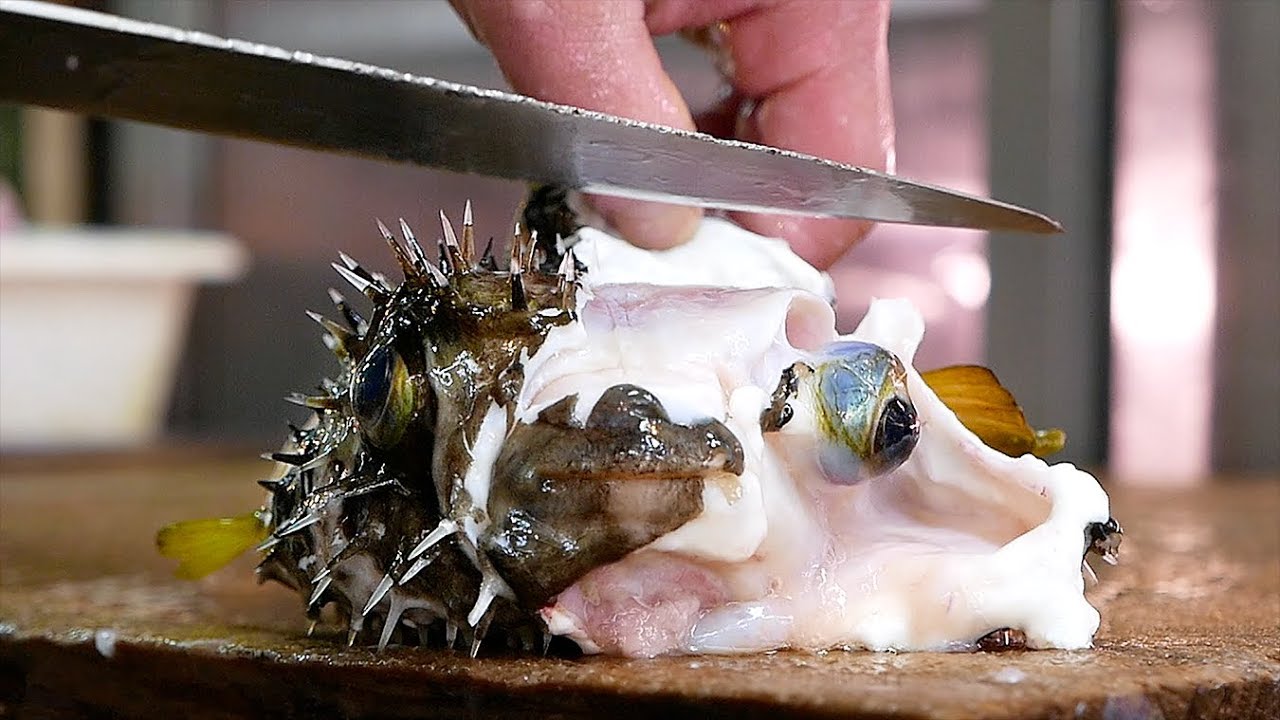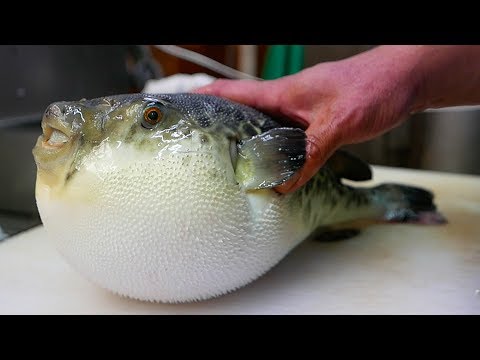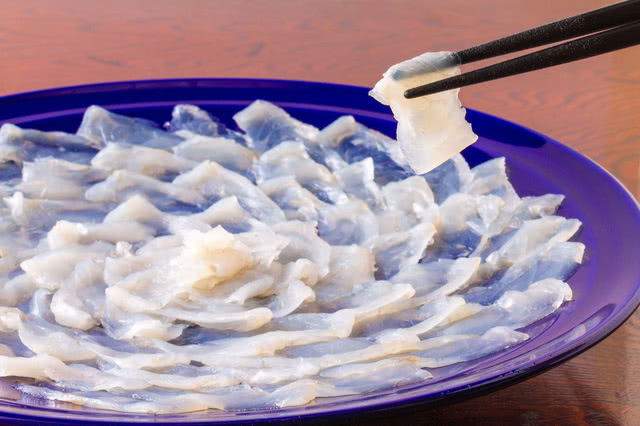Puffer Fish Food eat invertebrates and algae. They often indulge in a diet that includes shrimp, krill, and mollusks. Puffer Fish Food Essentials: Best Diet for Healthy Pets
Table of Contents
Puffer Fish can puff up when scared. They eat certain foods to stay healthy and keep their special defense working. People who own or love puffer fish should give them a diverse diet. It should have lots of nutrients and be like what they’d eat in the wild.
Since puffer fish are carnivores, they need food with lots of protein. They especially like live or frozen treats like bloodworms and crustaceans. It’s important to give them the right mix of vitamins and minerals.
Right, it’s like a triple win: they stay healthy, avoid getting sick, and digest their food more easy. Knowing what to feed your puffer fish is easy for keeping them happy and healthy in your home aquarium.
The Basics Of Puffer Fish Food Essentials
Puffer Fish foods are unique creatures with specific dietary needs. Understanding what to feed them is vital for their health and longevity. Feeding them right helps puffer fish display vibrant colors and stay active. Here’s what you need to know about feeding these fascinating fish.
Best Puffer Fish Food Essentials food Options
When it comes to nourishment, puffer fish thrive on variety. The best diet mimics what they would eat in the wild. Here’s a list of food options:
- Frozen foods: Bloodworms, brine shrimp, and krill.
- Live foods: Small snails and crustaceans.
- Vegetables: Zucchini and shelled peas.
- Algae wafers: For necessary fiber and plant nutrients.
- Specialty pellets: Formulated for puffer fish.
Feeding Schedule
Puffer fish feeding requires a schedule for consistency. Young puffers need feeding more frequently due to their growth rate. Here’s a simple feeding schedule:
| Age of Puffer Fish | Feeding Frequency |
|---|---|
| Young Puffers | Twice a day |
| Adult Puffers | Every other day |
The right balance and frequency keep puffer fish healthy. Always monitor their activity and appearance for dietary adjustments.
Understanding A Puffer Fish’s Diet
Do you know what a puffer fish loves to eat? Puffer fish diets are unique and fascinating. Every puffer fish owner should understand their diet for a happy and healthy pet.
Carnivorous Nature Puffer Fish Food
Puffer fish are natural hunters. In the wild, they eat main meat. This includes crustaceans, mollusks, and hard-shelled foods that help trim their ever-growing teeth.
Variety In Diet Puffer Fish Food
Puffer Fish Food A diverse diet is crucial for puffer fish. It ensures they get all the needed nutrients. Let’s break down the options:
- Live Foods: Worms and small fish provide enrichment.
- Frozen Foods: Bloodworms and shrimp are tasty and convenient.
- Artificial Foods: Special puffer pellets exist, but they should be part of a mixed diet.
Always remember, variety is key in your puffer fish’s diet. It keeps them healthy and prevents boredom.
Selecting The Right Puffer Fish Food Essentials
For puffer fish enthusiasts, picking the perfect diet is crucial. These unique creatures required a diverse menu to flourish. Variety ensures they get essential nutrients. It also mirrors their natural eating habits. Let’s explore the optimal food choices for puffer fish.
Live Foods
Live foods offer nutritional richness for puffer fish. They enjoy hunting, keeping them active and healthy. Common choices include:
- Snails: Great for their teeth.
- Worms: Bloodworms and earthworms are tasty.
- Crustaceans: Shrimps provide good nutrition.
Puffer Fish Food Feeding live foods once or twice a week is good practice. It reflects their wild diet. Rotate options to maintain interest and health.
Freeze-dried And Pellet Foods
Freeze-dried and pellet foods are convenient. They are less likely to carry diseases. When selecting these, consider the following:
| Food Type | Benefits |
|---|---|
| Freeze-Dried Krill | Rich in protein and nutrients. |
| Pellets | Formulated for balanced nutrition. |
Choose pellets designed for marine or freshwater puffer fish, depending on your pet. For better digestion, soak pellets in water before feeding.
Remember, variety is key for a happy, healthy puffer. Combine live, freeze-dried, and pellet foods for the best results.

Credit: m.youtube.com
Homemade Food Options
Puffer fish lovers take note: Preparing homemade food can enrich your pet’s diet. Quality ingredients lead to vibrant health. Let’s explore homemade options full of essential nutrients.
Recipes For Puffer Fish
Creating meals for puffer fish is enjoyable. Start with fresh ingredients. Use the recipes below:
- Shrimp Delight:
- Chop fresh shrimp into bite-sized pieces.
- Boil for 2 minutes, cool, and serve.
- Snail Mix:
- Crush aquatic snails, ensuring shells are include.
- It provides much-needed calcium.
- Worm Feast:
- Mix bloodworms with tank water.
- Freeze in an ice cube tray for single servings.
Remember, these are starting points. Get creative and observe your puffer fish’s preferences to adjust the recipes according.
Nutritional Considerations
Balance is key in a puffer fish diet. Mind these nutritional needs:
| Nutrient | Benefit | Food Source |
|---|---|---|
| Protein | Builds muscle | Shrimp, worms |
| Calcium | Strengthens bones | Snail shells |
| Vitamins | Improves health | Supplements, gut-loaded foods |
Offer a variety to cover all nutritional bases. Avoid overfeeding. Small, regular meals are best. Watch your puffer thrive on a balanced, homemade diet.
Feeding Tips And Techniques for Puffer Fish Food Essentials
Proper nutrition is essential for your puffer fish’s health. Focus on their unique needs. Keep your puffer happy and healthy with these smart feeding tips and techniques!
Slow Feeding Methods Puffer Fish Food
To prevent overeating, use methods that prolong feeding time. Try these:
- Scatter feed: Spread out food to encourage foraging.
- Use a feeding puzzle: Make or buy a puzzle that makes your fish work for their food.
- Frequent, small meals: Offer food in smaller amounts but more often.
This approach helps mimic their natural eating behaviors.
Observing Behavior Cues
Watch your puffer fish’s behavior for signs of hunger or fullness:
- If they are excite swimming at feeding time, they’re likely hungry.
- Ignoring food items might mean they are full or not interested in that type of food.
- Aggressive competing for food suggests the need for more feeding spots.
Adjust the feeding schedule based on these observations.

Credit: www.youtube.com
Natural Diet Of Puffer Fish Food Essentials
The natural diet of Puffer Fish is as intriguing as the creatures themselves. Often recognized for their unique ability to puff up when threatened, puffer fish boast a diverse menu in their natural habitats. Understanding what puffer fish eat in the wild helps ensure their dietary needs are met in captivity.
Examining Their Diet In The Wild
Puffer Fish Food When in their natural environment, puffer fish are opportunistic feeders. This means they eat a variety of foods based on availability. Let’s dive into what constitutes their menu underwater:
- Crustaceans: Crabs and shrimps are favorites.
- Mollusks: They relish snails and clams, which help wear down their ever-growing teeth.
- Algae and Corals: Some puffers nibble on plants and corals.
- Worms: Bloodworms and earthworms are part of their wild diet.
- Small Fish: They may sometimes feast on smaller fish species.
Evaluating Nutritional Value In Commercial Options
For puffer fish enthusiasts, replicating a natural diet with commercial foods is crucial. Here’s a glance at the nutritional value offered by some common commercial foods:
| Commercial Food | Key Nutrients | Benefits |
|---|---|---|
| Frozen Shrimp | Protein, Fats | Mimics their natural prey, good for teeth. |
| Specialized Pellets | Vitamins, Minerals | Formulated for balanced nutrition. |
| Freeze-Dried Snails | Calcium, Protein | Excellent for tooth health and similar to wild diet. |
In summary, choosing the right commercial food for puffer fish involves carefully blending nutrients that align with their natural dietary patterns. It’s vital for their health and longevity.
Potential Food-related Health Issues
Caring for puffer fish requires attention to their dietary needs. Puffer Fish Food Like all pets, puffer fish can face health problems from improper feeding. This section explores some common issues of poor diet practices.
Impact Of Overfeeding
Puffer Fish Food Essentials: Best Diet for Healthy Pets: Overfeeding puffer fish can lead to serious health problems:
- Tank pollution: Excess food decomposes, polluting the water and causing diseases.
- Obesity: Puffers may develop fatty liver disease, shortening their lifespan.
- Digestive blockage: Overeating can cause blockages, harming the puffer’s health.
It’s vital to feed puffer fish only as much as they can consume in a few minutes, twice a day.
Malnutrition Signs
Here are signs that a puffer fish may not be getting all the nutrients it needs:
| Sign | Description |
|---|---|
| Faded colors: | A clear indication of stress or poor diet. |
| Clamped fins: | Fins held close to the body signal discomfort. |
| Inactivity: | A lack of energy can be tied to nutritional deficits. |
A lack of energy can tied to nutritional deficits.
Feeding Puffer Fish In Community Tanks
Pufferfish Food poses special challenges in community tanks. when it comes to feeding them. Their diet differs significantly from other fish, which can create competition. Understanding the needs of puffer fish is crucial.
Compatibility With Other Fish Species
Not all fish can share a tank with puffer fish Food peacefully. To maintain balance, choose tank mates that are not aggressive. These should also not be too small, to prevent them from becoming puffer fish meals.
Ideal companions for puffer fish are those that occupy different tank levels. When other fish swim near the surface, it lets puffers feed undisturbed near the bottom.. This minimizes competition and stress during feeding.
Feeding Strategies For Puffers
Strategy is key when feeding puffers in a shared space. Swift swimmers might snatch up food before slower puffers get a chance. Use feeding tongs to target feed your puffers, ensuring they get their share.
- Use a feeding stick to place food direct where puffers dwell.
- Diversify feeding spots to prevent crowding in one area.
- Distribute feeding times to reduce competition.
Choosing The Right Diet
Puffers have sharp beaks that need hard food to stay trim. Offer a mix of shelled seafood, like clams and snails, to satisfy this need Balance their diet with appropriate quantities of specialized puffer food for health.
Adapting Diet For Different Puffer Fish Species
Pufferfish Food is a unique sea creature with diverse dietary needs. Each species has specific requirements for food that ensure their health and longevity. In this post, we’ll delve into how to adjust feeding habits to suit different species.
Specific Dietary Needs
Pufferfish diets vary greatly, but they all share a common need: proper nutrition. Many species must have a combination of proteins, vitamins, and minerals. Here’s what a puffer fish menu might include:
- Shelled seafood – provides calcium for strong beaks.
- Meaty foods – worms and small fish offer essential proteins.
- Algae or Seaweeds – for fiber and digestive health.
- Vitamin supplements – ensure well-rounded nutrition.
A healthy diet prevents diseases and promotes vibrant colors. Not all puffer fish eat the same, some need more of one thing and less of another.
Species Variations Puffer Fish Food
Different species, different diets. Freshwater, marine, and brackish puffer fish don’t eat the same foods. Let’s look at a few specific diet plans:
| Species | Environment | Diet |
|---|---|---|
| Dwarf Puffers | Freshwater | Snails and Frozen Bloodworms |
| Giant Puffers | Marine | Crabs and Shrimps |
| Green Spotted Puffers | Brackish | Shellfish and Squid |
It is crucial to research your fish’s natural habitat. Recreating their wild diet helps them thrive in your aquarium. Some species might need a specialized plan due to their particular needs. Consulting with a vet or an aquatic specialist can offer the best advice.
Conclusion And Key Takeaways
Providing the right food for your puffer fish is crucial. This post covered diet needs and health monitoring.
Balanced Diet Importance
A balanced diet ensures your puffer fish stays healthy. Varied foods prevent nutritional deficiencies.
- Frozen shrimp and snails help wear down their teeth.
- Algae and vegetables mimic natural diets.
- Supplement with high-end commercial food for complete nutrition.
Monitoring Fish Health
Watch for changes in appetite and behavior signs of health issues.
- Check their activity levels daily.
- Note any odd swimming patterns.
- Inspect for physical changes like spots or growths.
Regular check-ups with a vet who knows fish keep your puffer healthy.

Credit: savorjapan.com
Frequent Asked Questions
What Can I Feed My Puffer Fish?
Feed your puffer fish a varied diet that includes shrimp, clams, snails, and krill. Offer them occasional greens like zucchini and spinach for balance.
What Did Puffer Fish Eat?
Do puffer fish eat every day?
Don’t overfeed: your puffer doesn’t need more than a few portions a day.
Can you overfeed a pufferfish?
Puffers don’t die from overeating but if he ate that snail with the shell that could do it. Fish will keep eating until they physically fit any more food in themselves.
Due to their appetite, these fish too
much food. Aim for a two-a-day feeding schedule.
Why did my puffer fish puff up?
Pufferfish will “puff up” as a defense mechanism if they are threatened.
A shape that is more than double its original size, round, and sometimes covered in spines is much more difficult to bite and isn’t very appetizing to a predator.
Puffer fish prima eat crustaceans, mollusks, and sometimes hard-shelled invertebrates. They also consume algae and other plant matter. Their strong beaks easy crush shells.
What Do Puffer Fish Eat In Aquariums?
In aquariums, puffer fish most eat meaty foods like shrimp, squids, and clams. They also eat special made pellets. They sometimes consume algae and plant matter too.
Can pufferfish only puff once?
They can inflate many times throughout their lives as needed. So, it is not true that they can inflate just twice in a lifetime.
If the fish is inflated on the surface, it is likely to ingest air. The air can be difficult to expel and can cause the death of the fish since the fish floats and can not leave the surface.
How Often Do Puffer Fish Eat?
Pufferfish typically eat once every one to two days. Adequate feeding schedules maintain their health and prevent overeating.
Conclusion
Feeding puffer fish is a delicate balance of nutrition and variety. Choosing the right diet enhances your pet’s health and coloration. Remember, variety is key, and moderation prevents overfeeding. Understanding what your puffer fish need to eat can help them thrive in their aquarium.
Provide quality food, and enjoy the vibrant life in your tank.









Leave a Reply